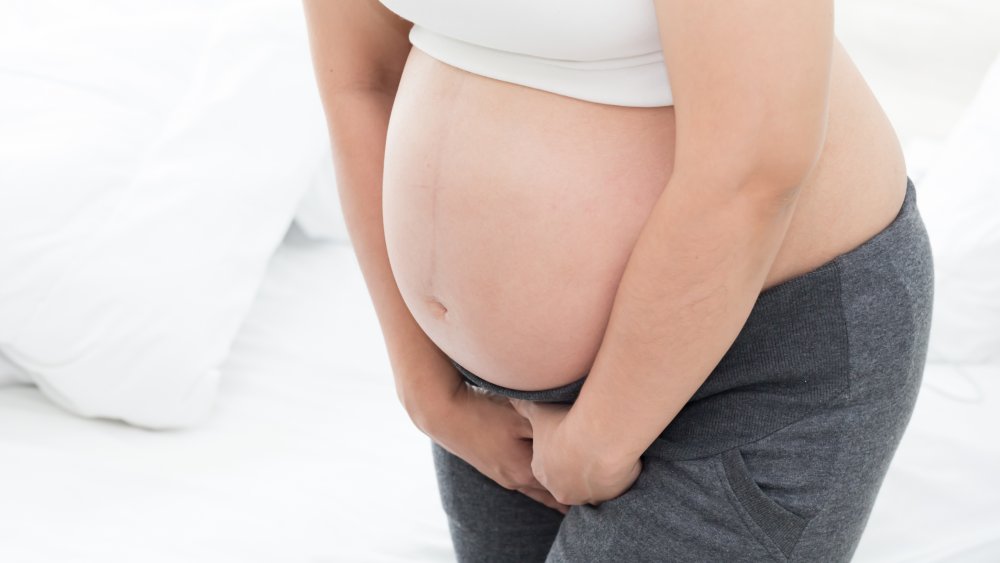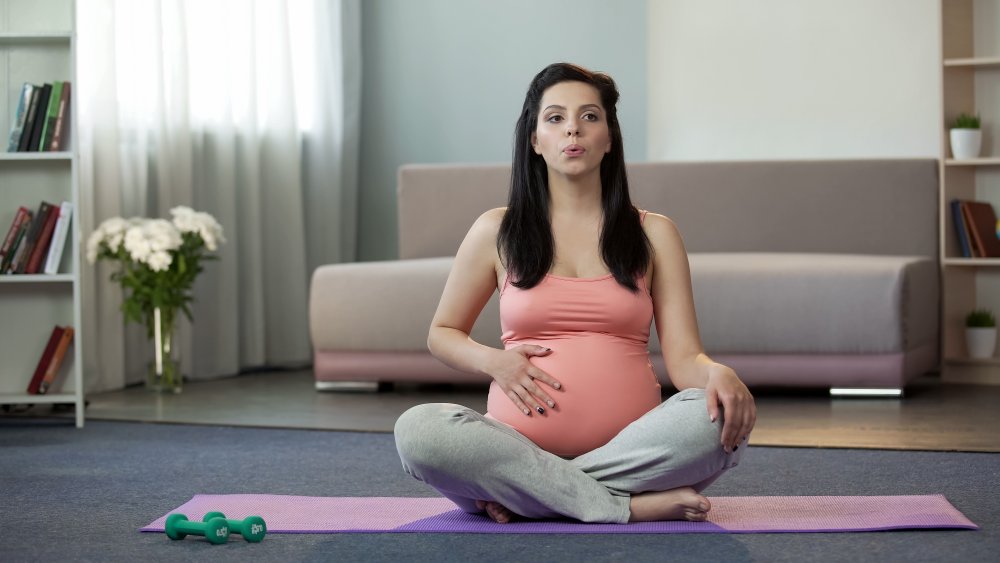Here's How To Stop Peeing Your Pants While Pregnant, According To A Pelvic Floor Physio
No matter how cute your baby bump is, you've got to admit it: Pregnancy is not glamorous. From heaving up your breakfast to bursting out of your bras and popping the buttons off of your pants, all kinds of not-so-fabulous things can happen when you've got a baby on board. The pregnancy symptom that is the icing on the proverbial diaper cake, though, is urinary incontinence, aka peeing in your pants. It's bad enough that you can't see your feet anymore — now you can't even laugh or sneeze without feeling like a toddler who forgot her potty-training?
Fortunately, there are ways you can take back control of your bladder. In an exclusive interview with The List, Allison Oswald, PT, DPT, WCS, an expert in prenatal pelvic health, offered tips for taking back control of your pelvic floor. "There are so many new symptoms that come up during pregnancy, one of which can be urinary incontinence, which just means leaking urine unintentionally," she explained. "It is very often accompanied by a sneeze, a cough, a big laugh or even just realizing you've held it too long to make it to the bathroom. This is not only embarrassing and inconvenient, but also a sign that the pelvic floor is not functioning as well as it should. Thankfully, there is a lot you can do about it."
Stand up to incontinence by improving your posture
One of the reasons why you might find yourself losing control of your bladder is that your posture has changed, thanks to your growing girth. "During pregnancy, as the belly grows, women often begin to sink into their hips and emphasize the belly protruding forward," Oswald explained. "This alignment puts an increased pressure on the bladder and pelvic floor muscles."
If you never had balance-a-book-on-your-head posture in the first place, now is a good time to work on standing with your head held high. "Women should do their best to stand tall, keep the weight of their body more evenly distributed between their heels and balls of the feet, and avoid overly arching their low back," Oswald advised. With a neutral spine, you'll have better control of your core. "Practice this as often as possible, but especially so when you are coughing or sneezing," she added. "Staying upright versus rounding forward when you cough will help lessen the load on the pelvic floor."
Breathing exercises can help you improve your pelvic control
You might already be doing some breathing exercises if you're taking a natural childbirth class or prenatal yoga. You can add some exercises specifically designed to improve your pelvic control to the mix, per Oswald. "Continuing to use the core muscles during pregnancy is so important for maintaining continence," she explained. "The best way to do this is to learn how to properly engage the pelvic floor and deep ab muscles simultaneously, it feels like gently hugging the baby or wearing a supportive pair of underwear."
How do you do this supportive underwear/baby-hugging breathing technique? Oswald said it's pretty simple. "Inhale through the nose, feeling the belly expand," she instructed. Your next step? "Exhale through the mouth as you gently engage the pelvic floor — squeeze and lift the muscles as if you're pulling a tampon inside — and tighten the lower abs."
You should practice this strategy when you're doing any of the behaviors that make it harder for you to control your bladder. "Engaging the pelvic floor and deep abs is what you should do when you cough/sneeze, lift something heavy, get up from the floor, and any other functional activity where you notice leaking, to give you the support you need," Oswald explained.


